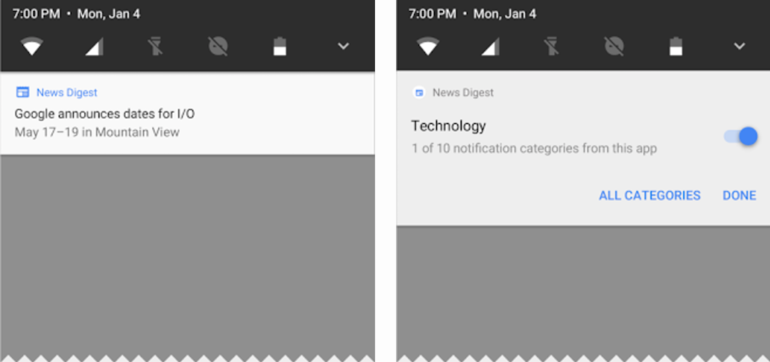The age of Nougat is over. Google has officially unveiled its new Android O operating system for smartphones and tablets at its I/O conference.
Right now, Android O really is meant for developers to start learning from and improving their apps. That means you can download its beta incarnation to an array of Google’s own devices, including the Pixel, Pixel XL, Pixel C, Nexus 5X, Nexus 6P, and Nexus Player.
Even if you don’t plan on jumping on this initial build, it’s worth finding out what to expect when Android O gets finalised later this year – and has a proper name. It’s gotta be Oreo, right?
Right now, most of the enhancements seem relatively minor, but they could collectively go a long way to helping your Android do more, act smarter, and last longer. Here’s what we know so far.
1) BETTER BATTERY LIFE
Google’s Doze mode in Android Marshmallow and Nougat helped preserve precious battery life by keeping your phone in a lowered power state when in your pocket, but now Android O promises to do even more to prevent apps from wasting your charge.
Android O will limit what apps can do when they’re idling in the background of your phone, which means cutting off broadcasts, background services, and location updates. Developers may need to find ways to ensure that their current apps can still function with these new automatic restrictions, but the end result should be more efficient, longer-lasting devices.
We should see a bit more speed around Android O, as well, as the Android runtime is said to be twice as fast in some benchmark tests, according to TechCrunch.
2) MORE NOTIFICATION CONTROLS

Android O also lets developers change the background colour of a notification, useful when there’s a critical alert, and can display more content in the collapsed form. You’ll also be able to silence some notifications and have them return later, while developers can have timed notifications cancel themselves out.
Oh, and if that wasn’t enough, notification dots will now appear above apps that you need to check in on. Anyone who’s owned an iPhone will be very much familiar with this routine, but it’s still a much-appreciated feature for Android users.
3) PICTURE-IN-PICTURE MODE
Android O will provide a native picture-in-picture framework for video apps, allowing users to continue watching footage in a small window while navigating elsewhere.
This will be handy for continuing to watch, say, a YouTube clip or Netflix TV episode while reading email, summoning an Uber car, or navigating around the OS. Granted, the window will be absolutely tiny on your average smartphone, but it’s still better than having to stop and start every time you need to do something else on the screen.
Sure, we’ve seen this kind of thing before on Samsung Galaxy Note phones, but those are basically dead now. What’s old is new again.
4) ADAPTIVE ICONS
Developers will be able to create so-called “adaptive icons” that offer multiple shape options that automatically shift based on your home screen theme. Circle, rounded square, or something in between? Android O hopes to keep your home screen grid uniform and unified by enabling creators to pack in multiple options.
5) IMPROVED SOUND QUALITY
As headphone ports become less and less standard, more people are being pushed towards Bluetooth earbuds and cans… which they might be wary of. But Google hopes to help ease the transition with some audio quality enhancements in Android O.
Android O will bundle in “high-quality Bluetooth audio codecs” to improve the quality of your wireless cans, and utilise Sony’s LDAC technology to allow for Hi-Res Audio playback over Bluetooth. Sony has apparently been a major partner for that inclusion, contributing 30+ feature enhancements and more than 250 bug fixes to Android O so far.
6) BETTER AUTOFILL SUPPORT
Why is this important? Because many people use password management apps to secure and store their vital info, and now Google will make that implementation seamless. According to Google’s Dave Burke, VP of Engineering, it’ll function much like choosing a keyboard app.
7) MULTI-DISPLAY SUPPORT
We’ll have to see just how useful this is to the average user, but Google is promising some kind of multi-display support “for launching an activity on a remote display.”
This might be something that would come in handy for corresponding with a Chromebook, now that Chrome OS is becoming more and more friendly with Android, or maybe there’s more to it. Right now, we only have this limited info from Google’s developer preview documentation, but we’ll stay tuned to see if it ends up being something really compelling.
8) IMPROVED KEYBOARD INPUTS
The more that developers tap into that functionality for arrow and tab movement, the more comfortable it’ll be to actually utilise typically touch-based experiences on a computer. And that will go a long way towards creating that harmonious paring of operating systems that Google seems to be striving for.